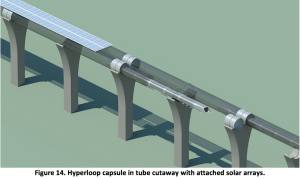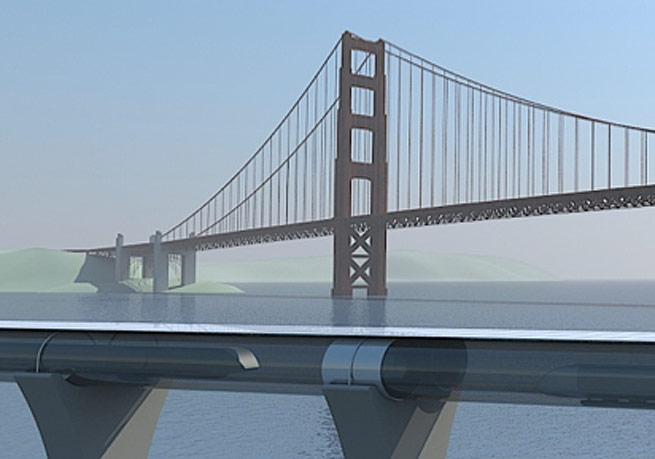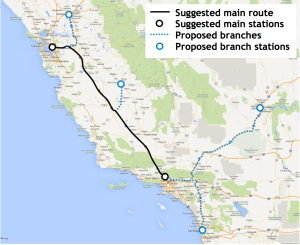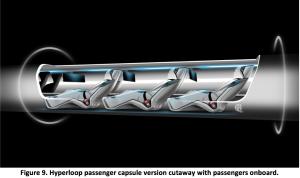Inventor, philanthropist, billionaire, and titan of industry Elon Musk unveiled a 57-page plan yesterday for a super-speed train that would take passengers between LA and San Francisco in just 30 minutes.
We previewed it, and we covered it.
But there’s a lot more to know about the Hyperloop — a high-speed train-in-a-tube that makes all other high-speed trains look like they’re stuck in first gear — including the current fastest train in the world in regular operation, the 268 mph Shanghai maglev train, which I’ve personally ridden.
You could all read those 57 pages — or scan these Cole’s Notes.
The basic Hyperloop concept in a nutshell:
- People-carrying capsules running through a long metal tube
- 28-person capacity
- 40 total capsules in activity at rush hour
- Almost a cross between the pneumatic tube delivery systems in old buildings and a Japanese bullet train
- Capsules float on cushions of air like hockey pucks
- Tube is elevated on 25,000 concrete pylons
The Hyperloop’s speed and initial routes:
- Up to 760 miles per hour, or Mach .91 at the tube’s air pressure
- Slowing to 300 mph for turns
- Compares to most airplanes’ speed of 550 mph
- At Hyperloop speeds, travel time from L.A. to San Francisco is 30 minutes
- Additional cities to be added later: San Diego, Sacramento, and Fresno
- Passenger capsules: $1.3 million each
- Car and cargo capsules: $1.5 million each
- Stations: $125 million each
- Tube, pillars, and stations: $4 billion, or $5.31 billion for a larger tube with higher capacity
- Total cost: $6.1 billion
- Comparison: the proposed California High Speed Rail project is estimated at $68.4 billion
Air, pressure, and pumping:
- Atmospheric pressure inside the tube: 17 percent of the pressure of Mars, which is already only 1 percent of Earth at sea level
- Equivalent to the air pressure on earth at 150,000 feet, four times higher than most airplanes fly
- There’s still too much pressure against the capsules, so each capsule pumps air from the front to the back via a compressor — and uses some of it to float on like a hockey puck
Power:
- All power is provided by solar panels on the top of the 381-mile-long tube
- Energy cost per passenger: less than 100 megajoules (about 3/4 of a gallon of gas)
- Energy cost per car in cargo capsules: about 220 megajoules
- Per-passenger comparisons: car (800 MJ), motorcycle (900MJ), airplane (1100 MJ)
 Ticket prices and round-trip travel times:
Ticket prices and round-trip travel times:
- Hyperloop: $40 round-trip
1 hour 10 minutes total travel time - Airplane: $158 round-trip
2 hours 30 minutes total travel time - Car: $115 round-trip (gas only)
11 hours total travel time - Proposed California High Speed Rail: $210 round-trip
5 hours total travel time
- Capsules always connected via radio with station operators
- Redundant power supplies on-board
- Backup mechanical braking mechanism in case electrical motors fail
- Oxygen masks for passengers deploy in case of depressurization
- Tube can be rapidly re-pressurized if needed
- Tube built with flexibility to withstand earthquakes
Motors
- Motors are in the tubes, not the capsules
- Hyperloop uses linear induction electric motors, similar to those in the Tesla
- The linear induction motor works via electromagnetism
- Motors are only required for about one percent of the tube: initial speed-up and quick top-ups every 70 miles
- Most of the time, capsules simply coast












